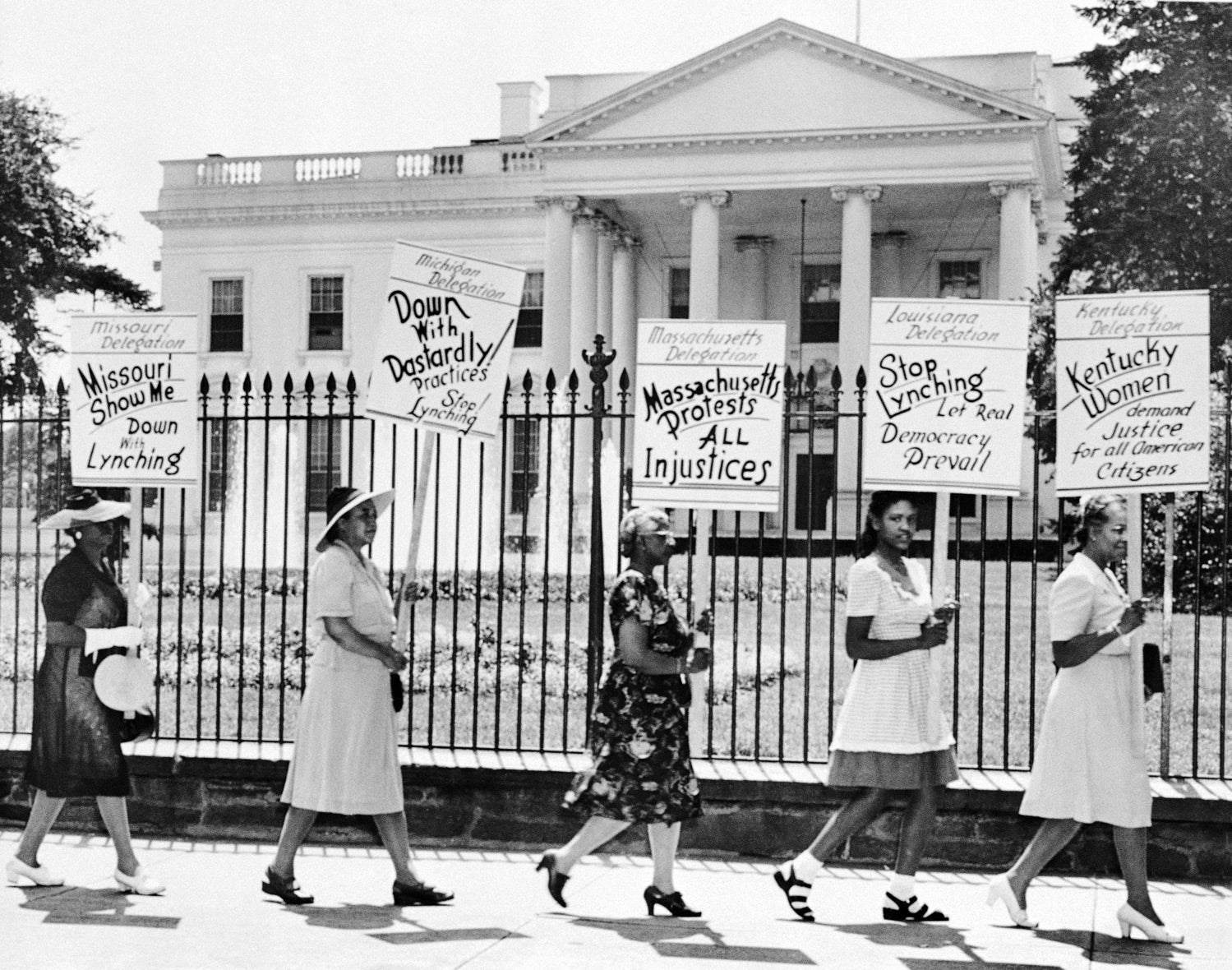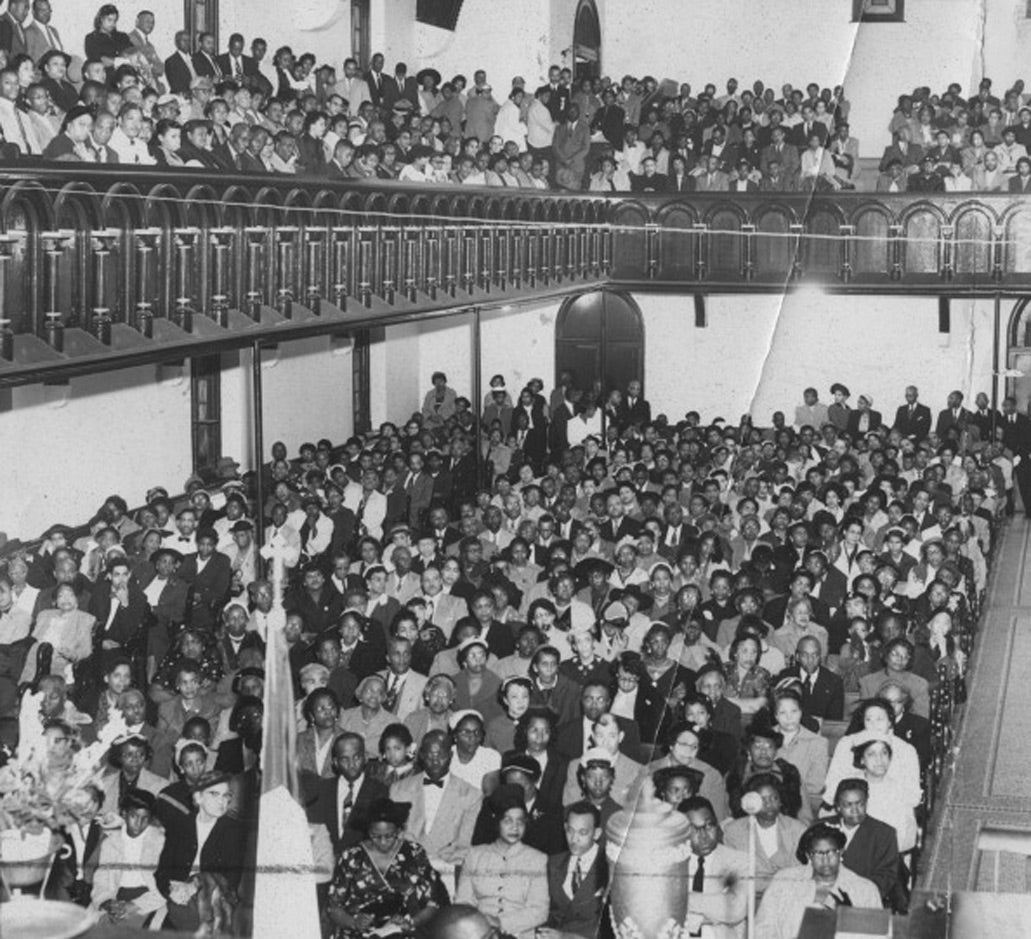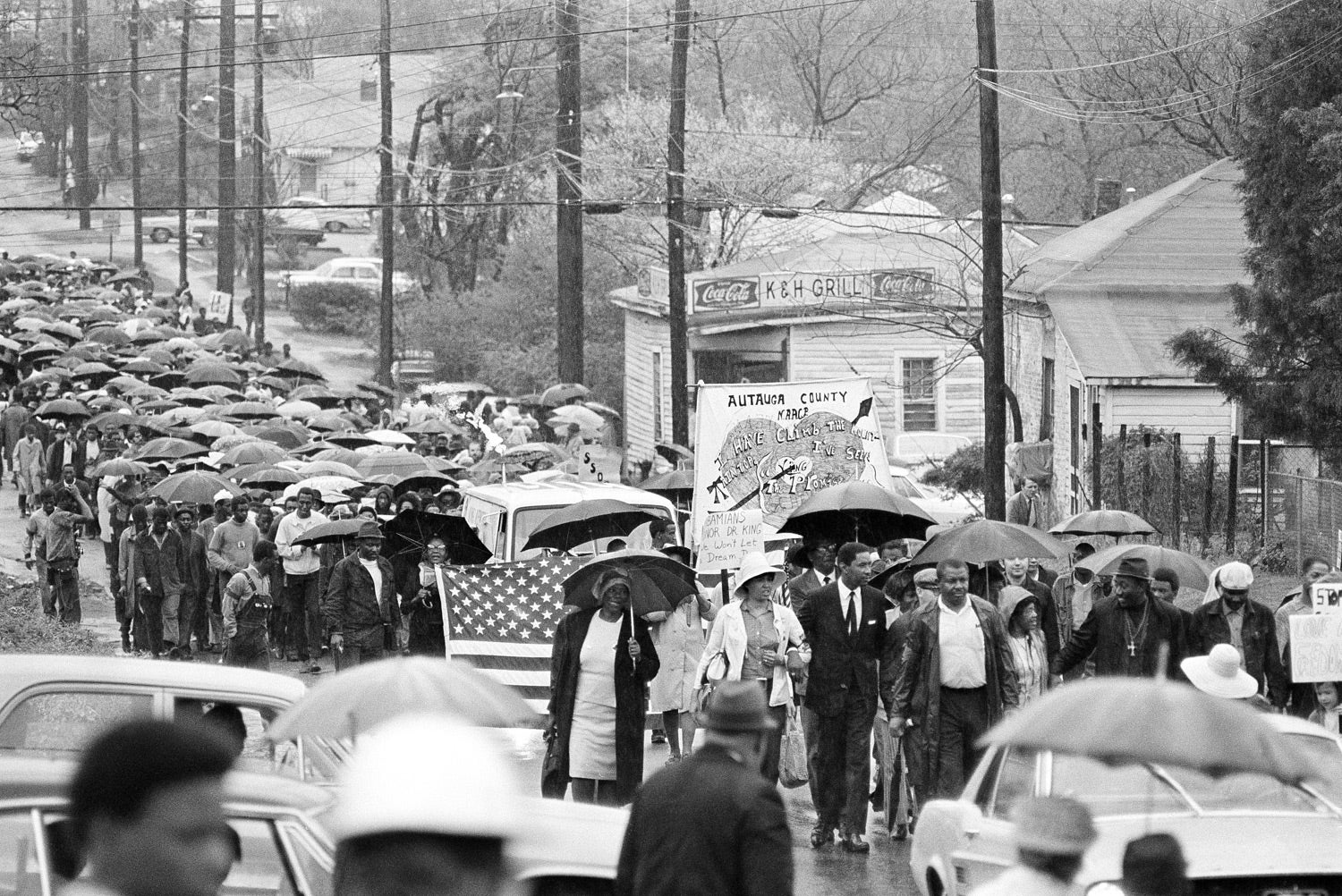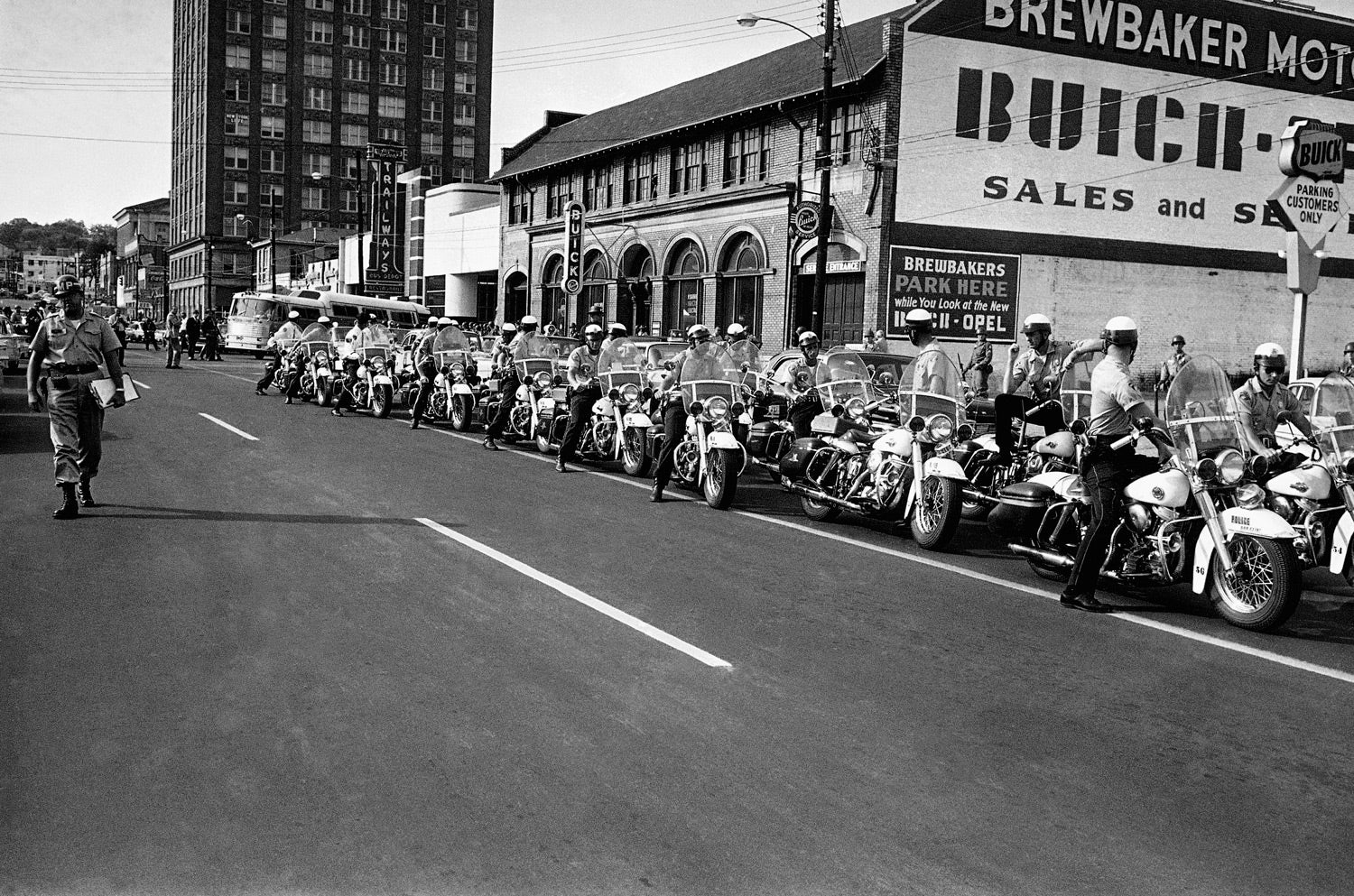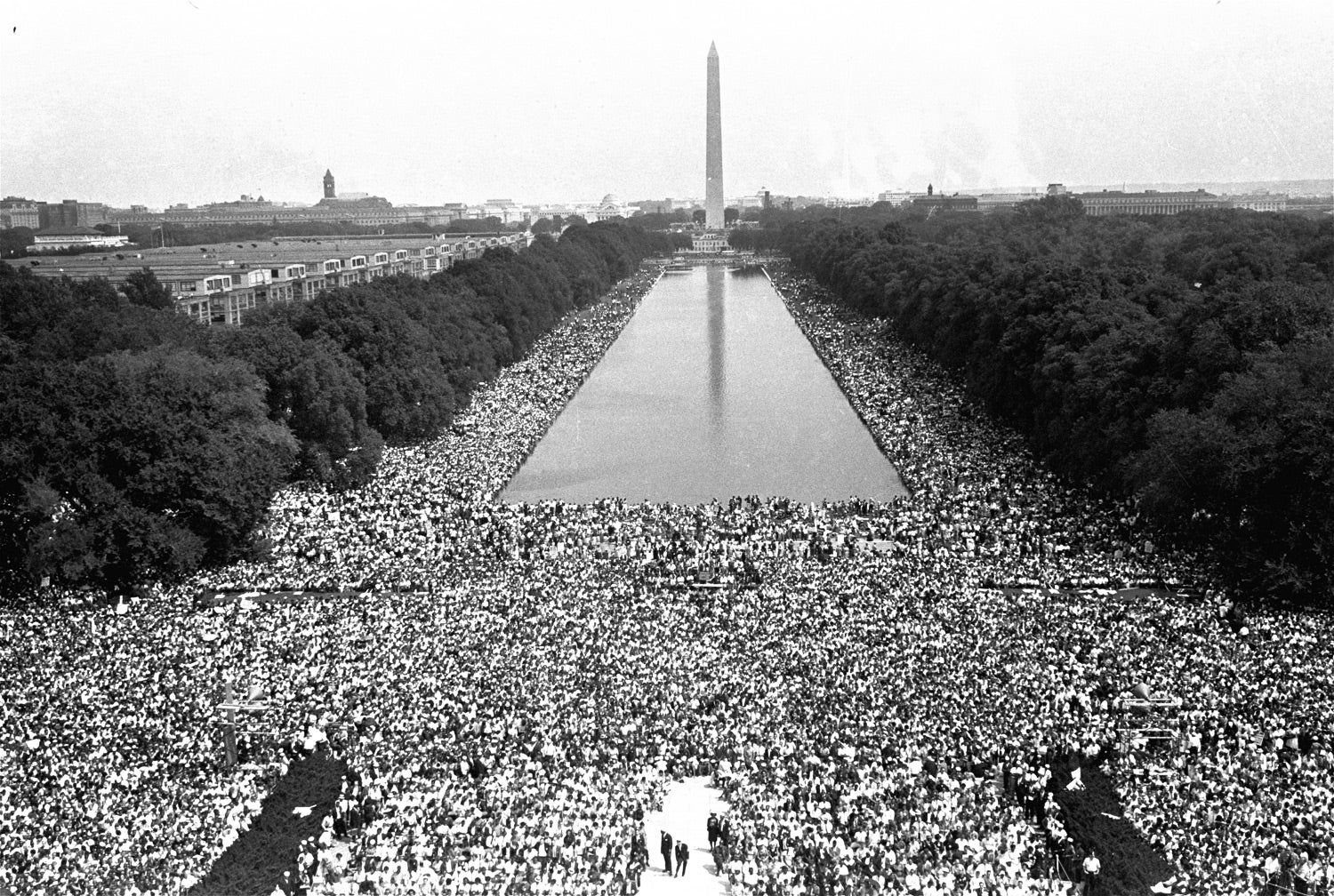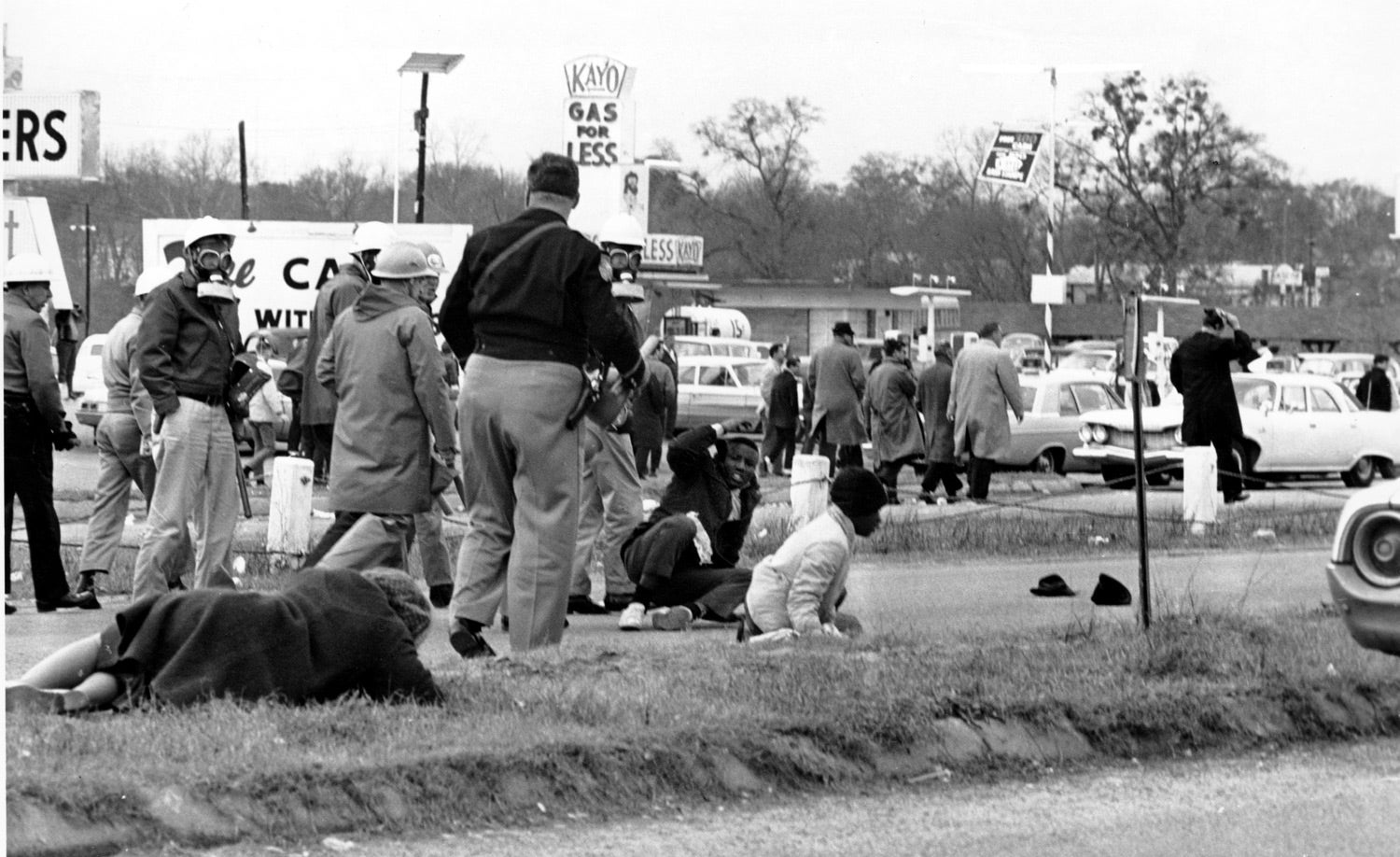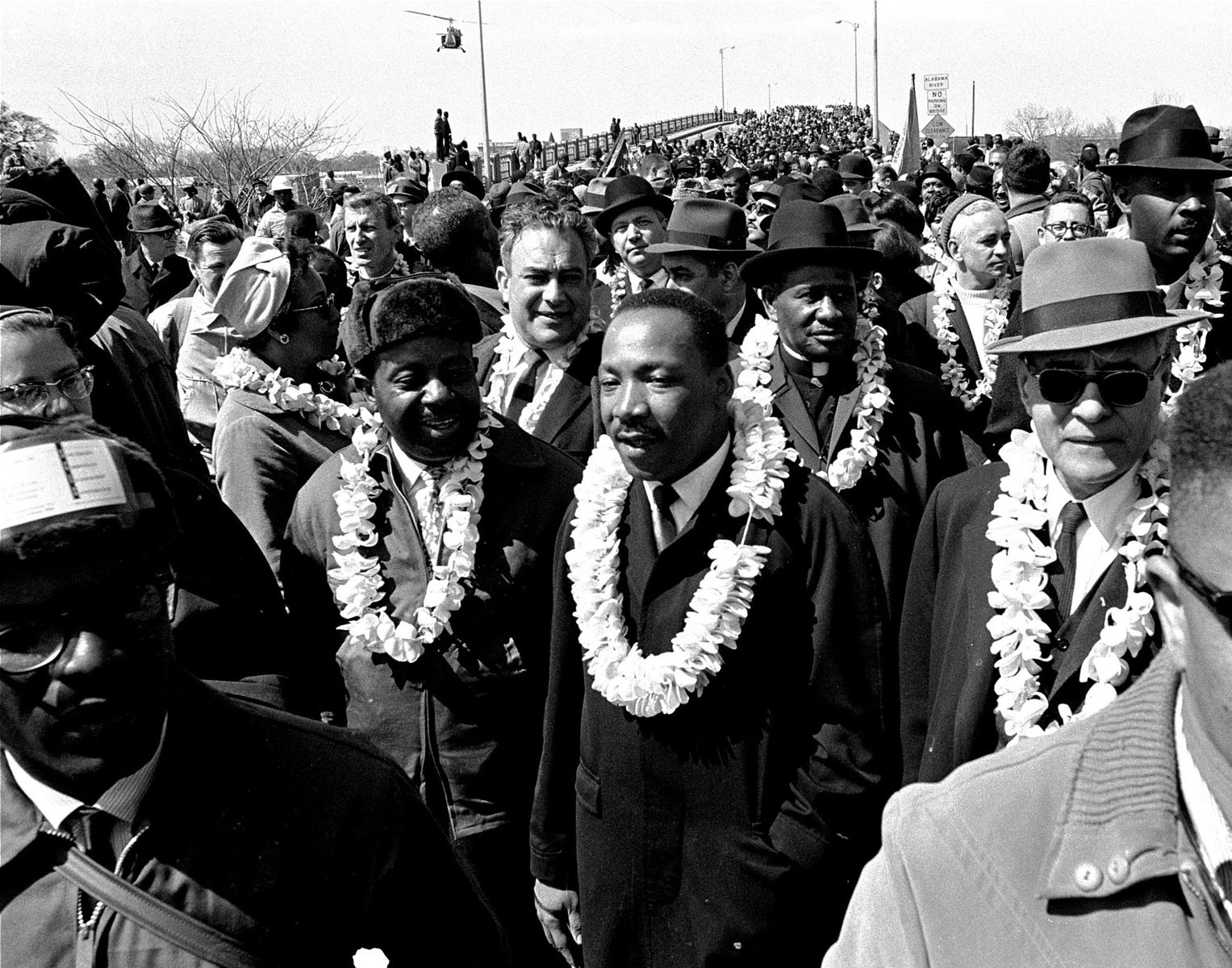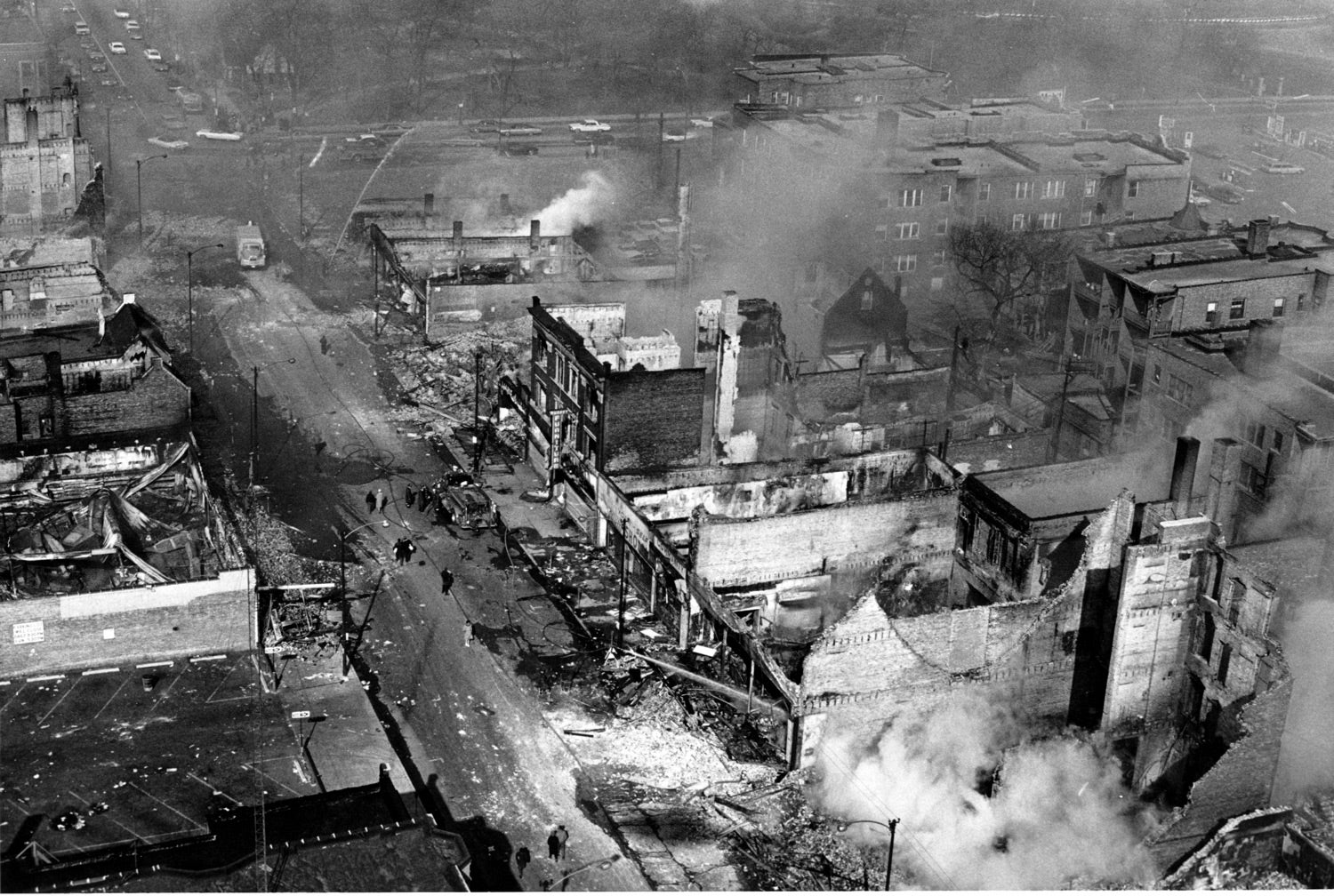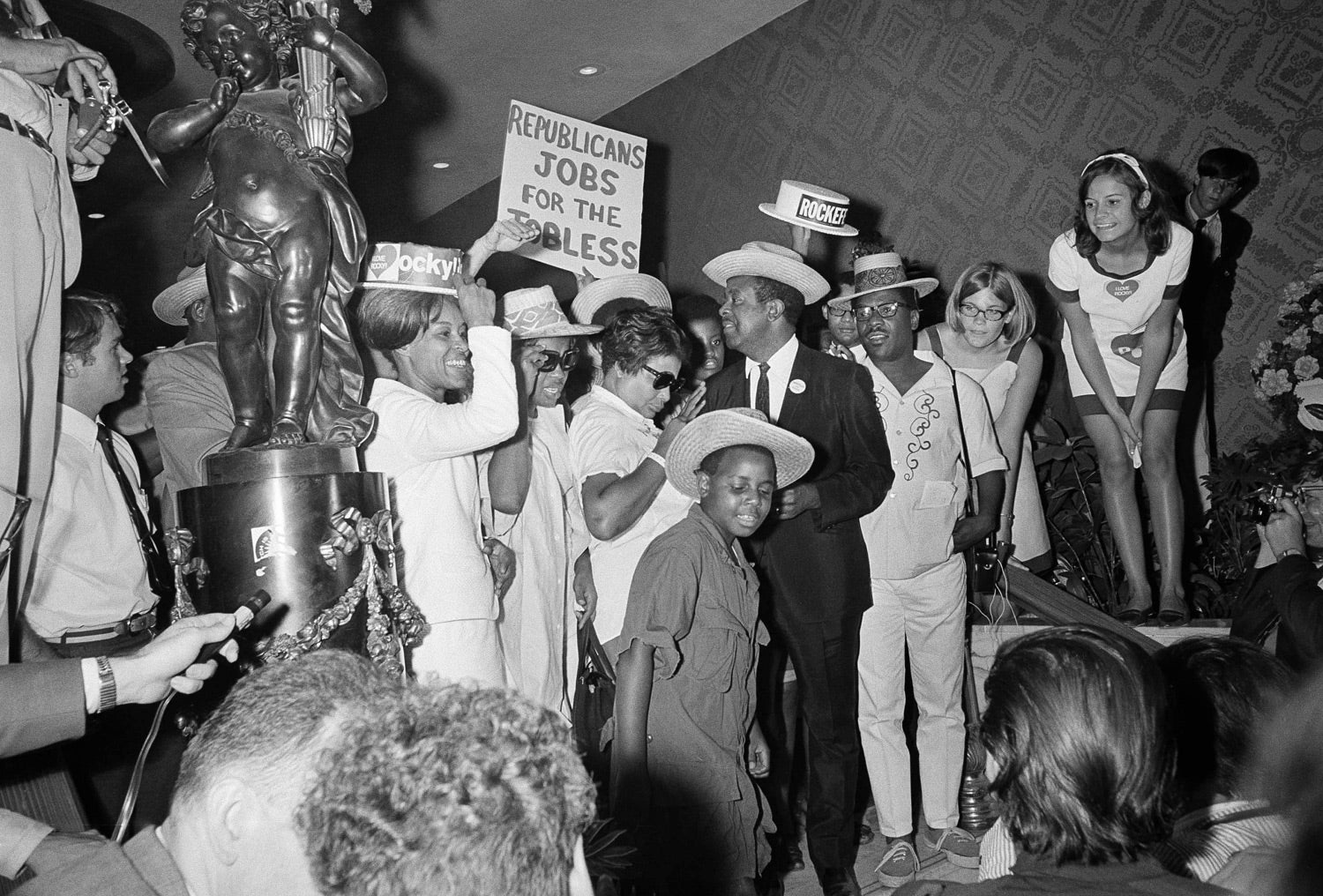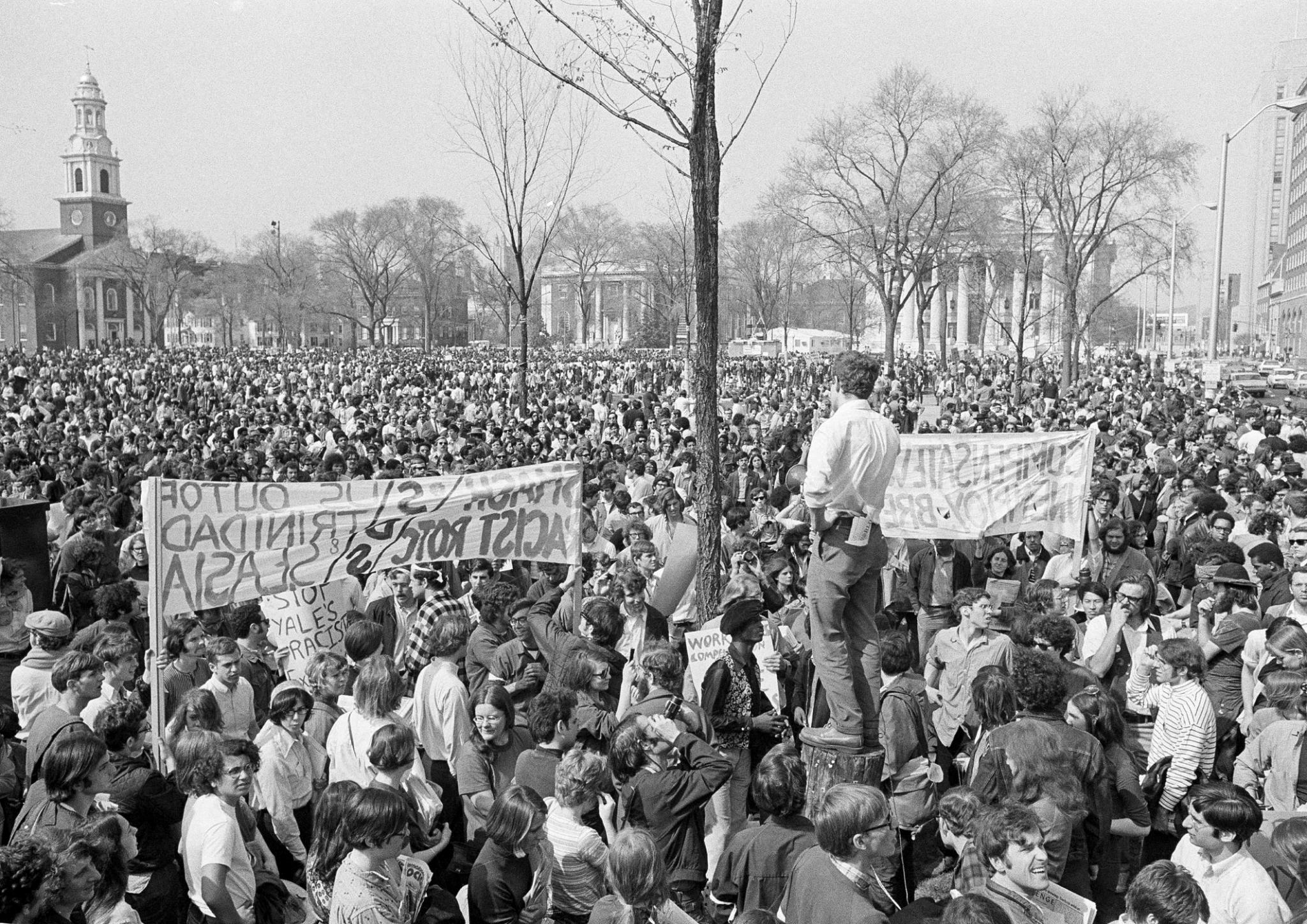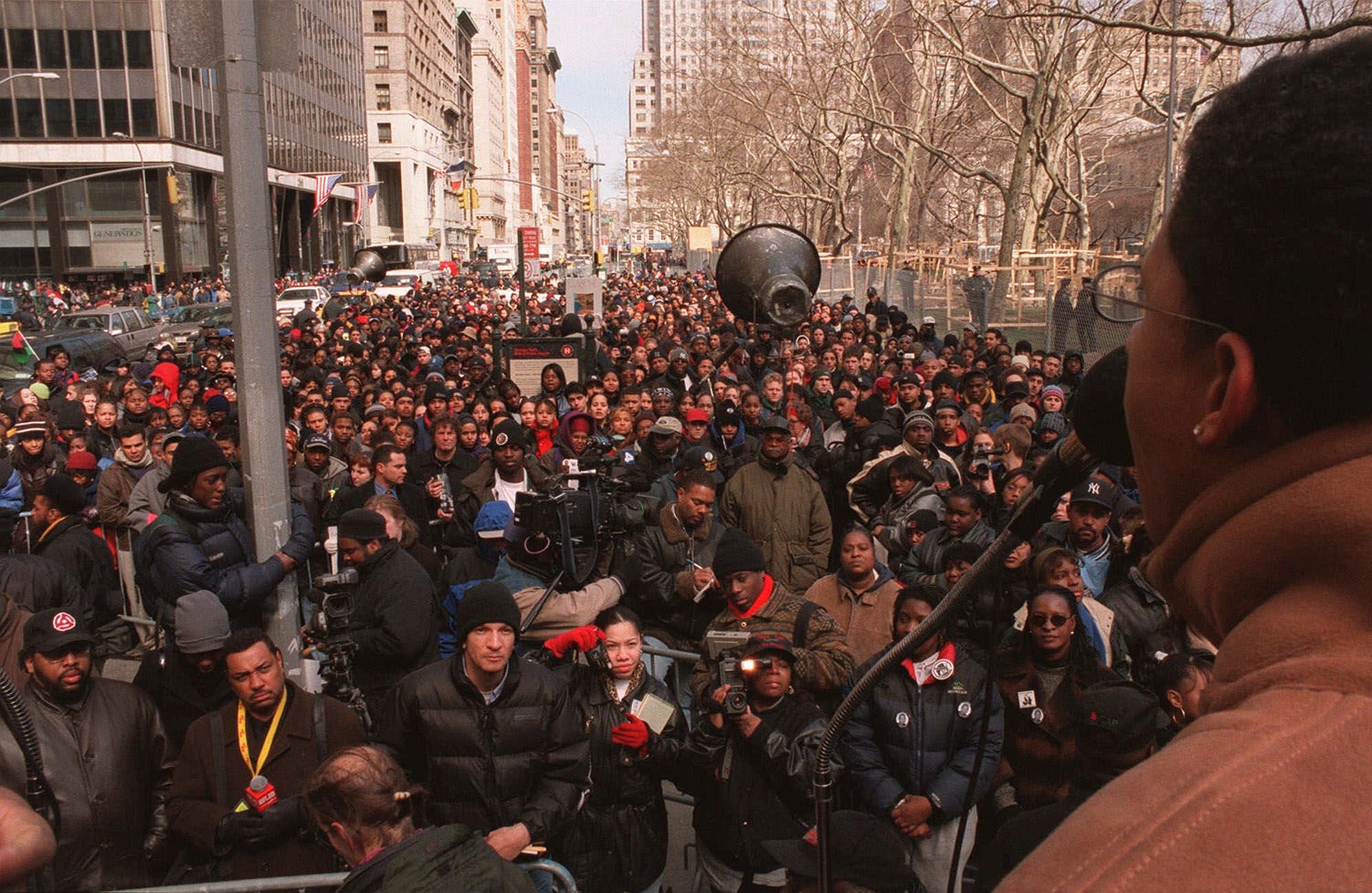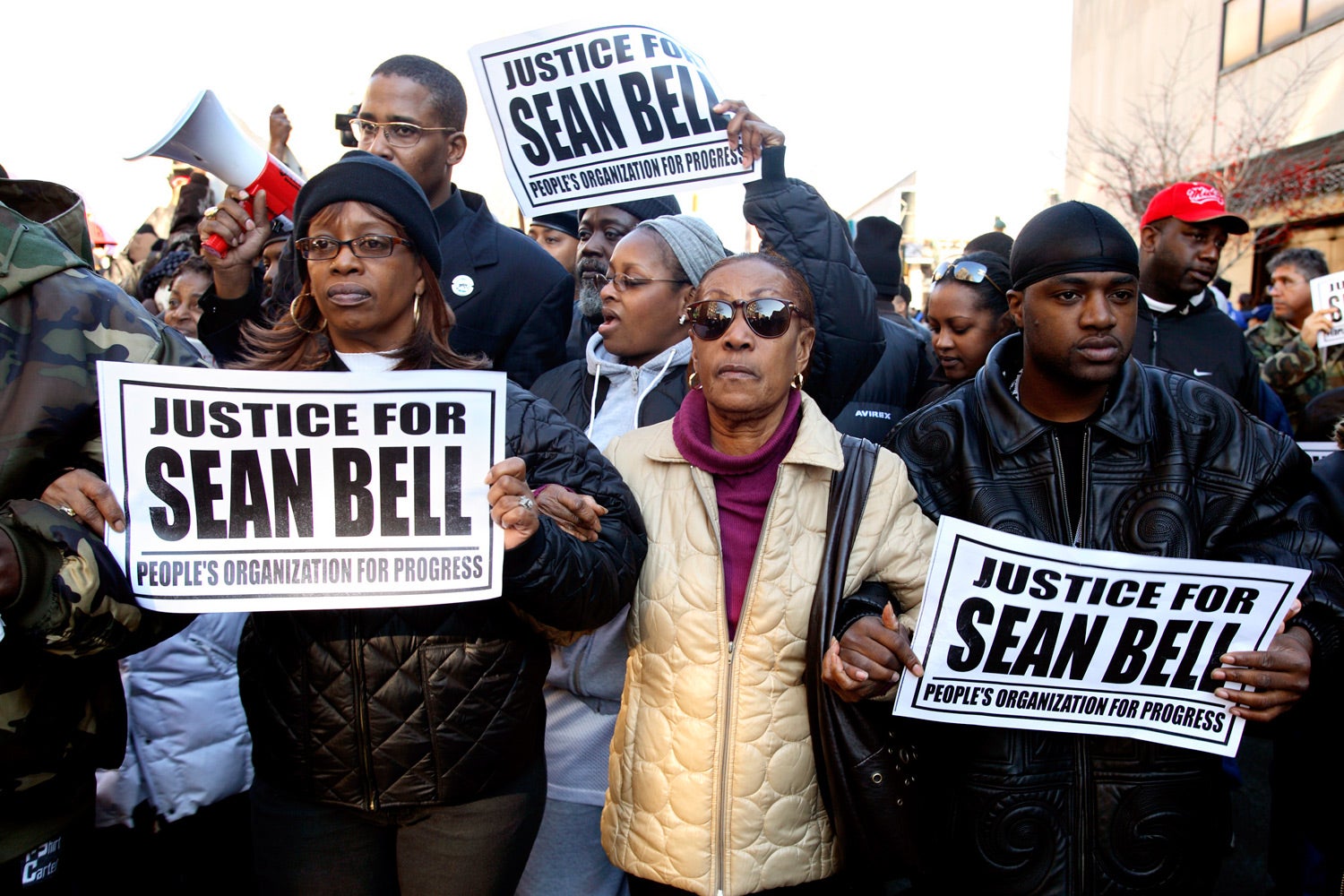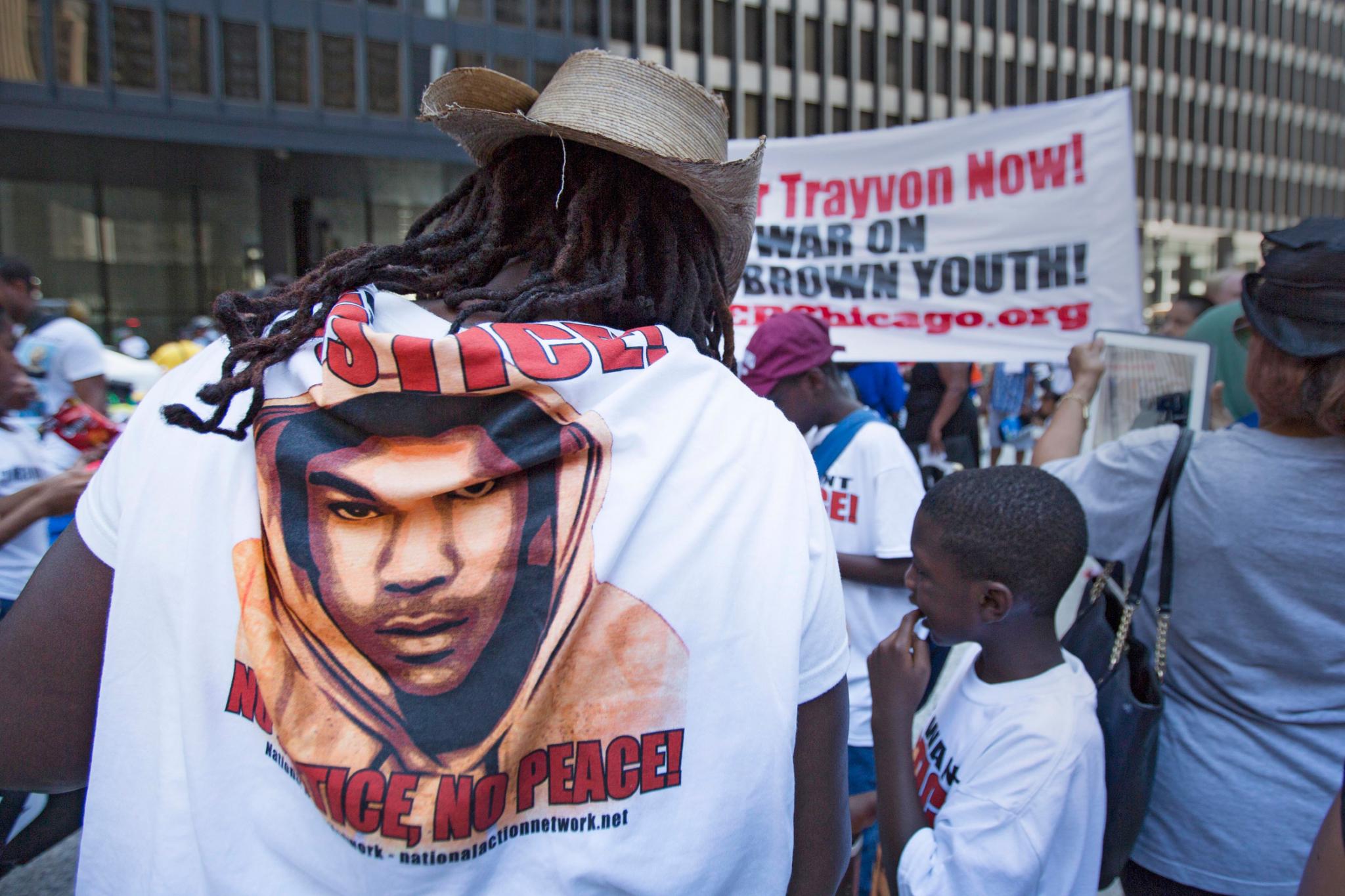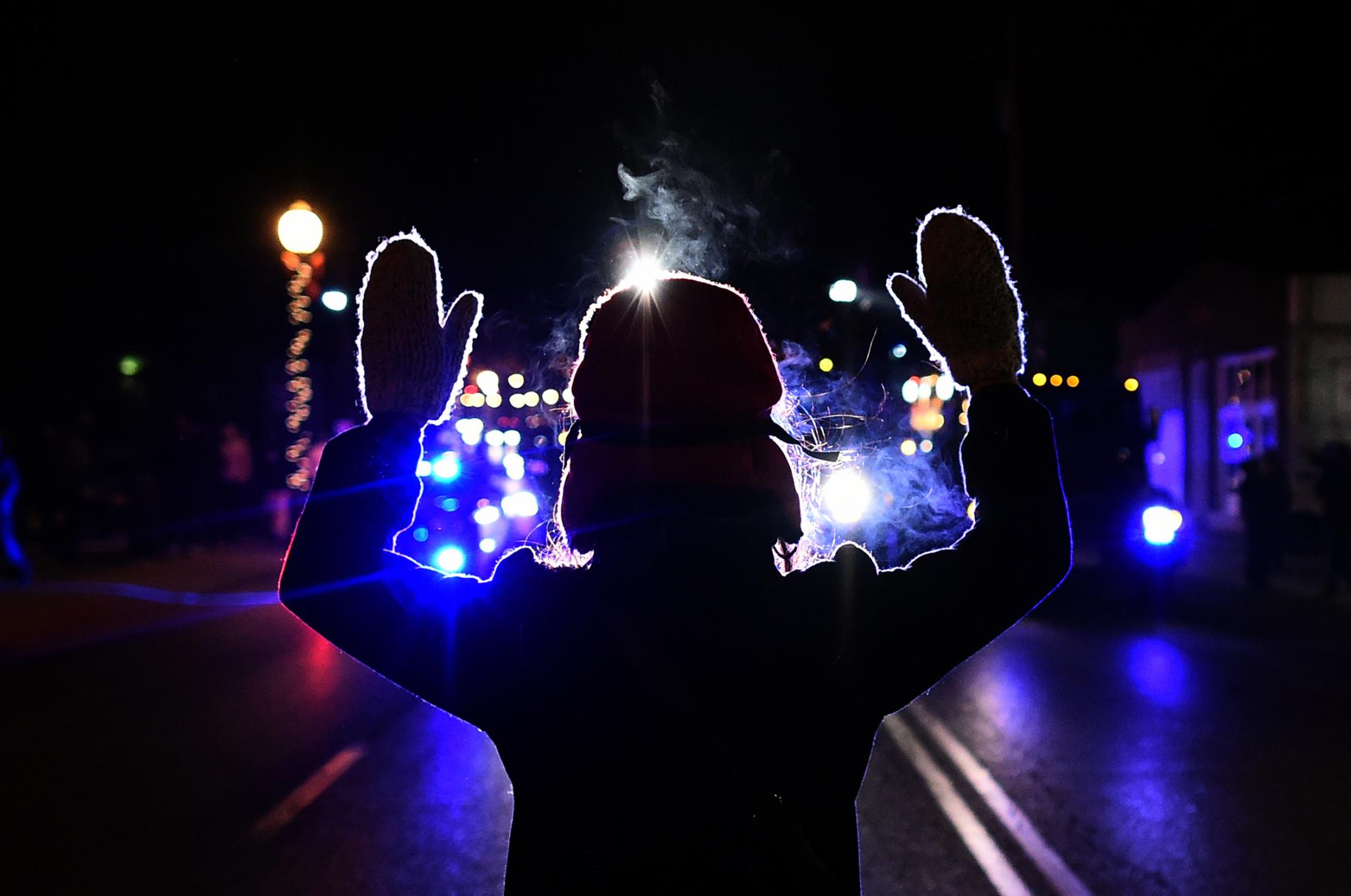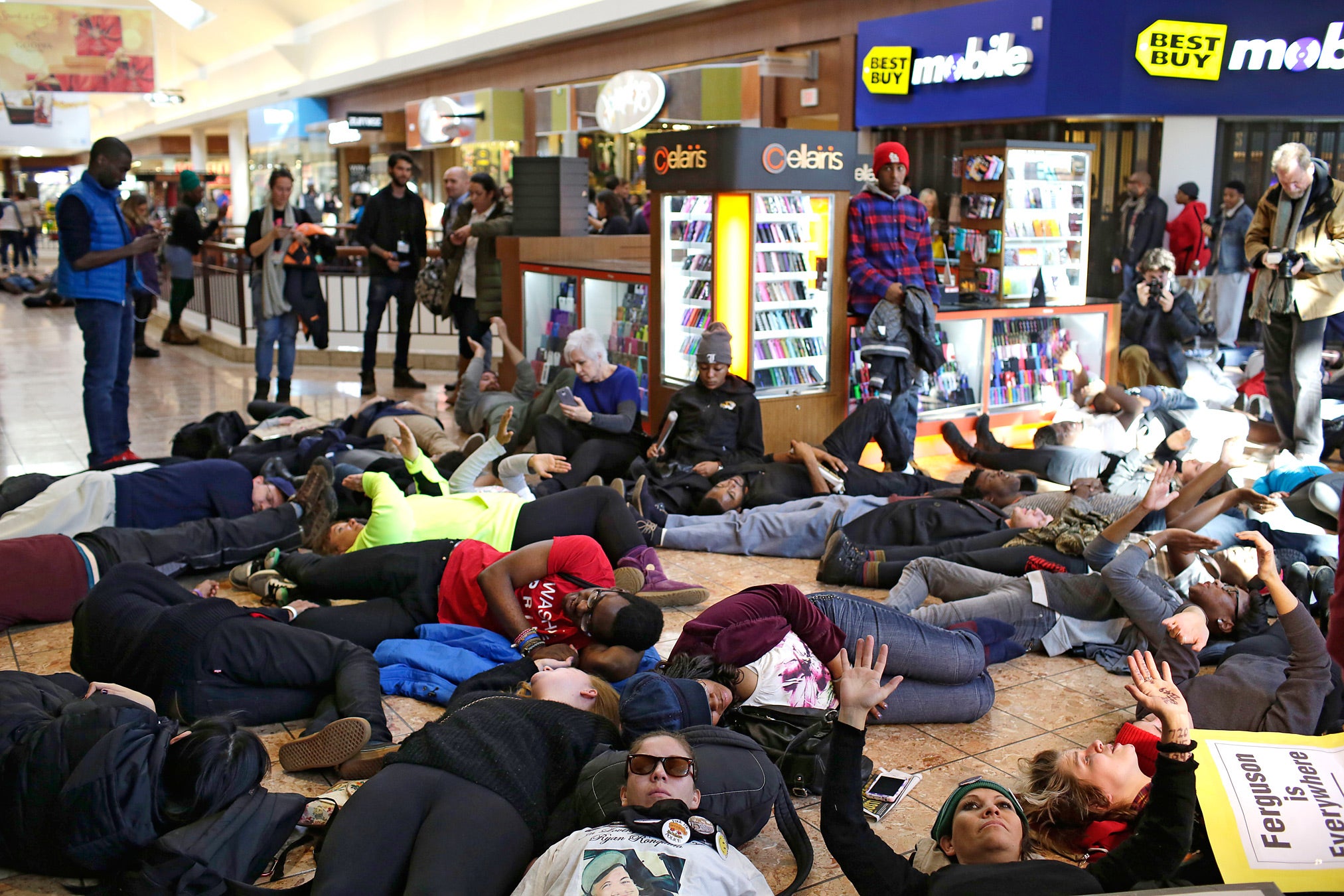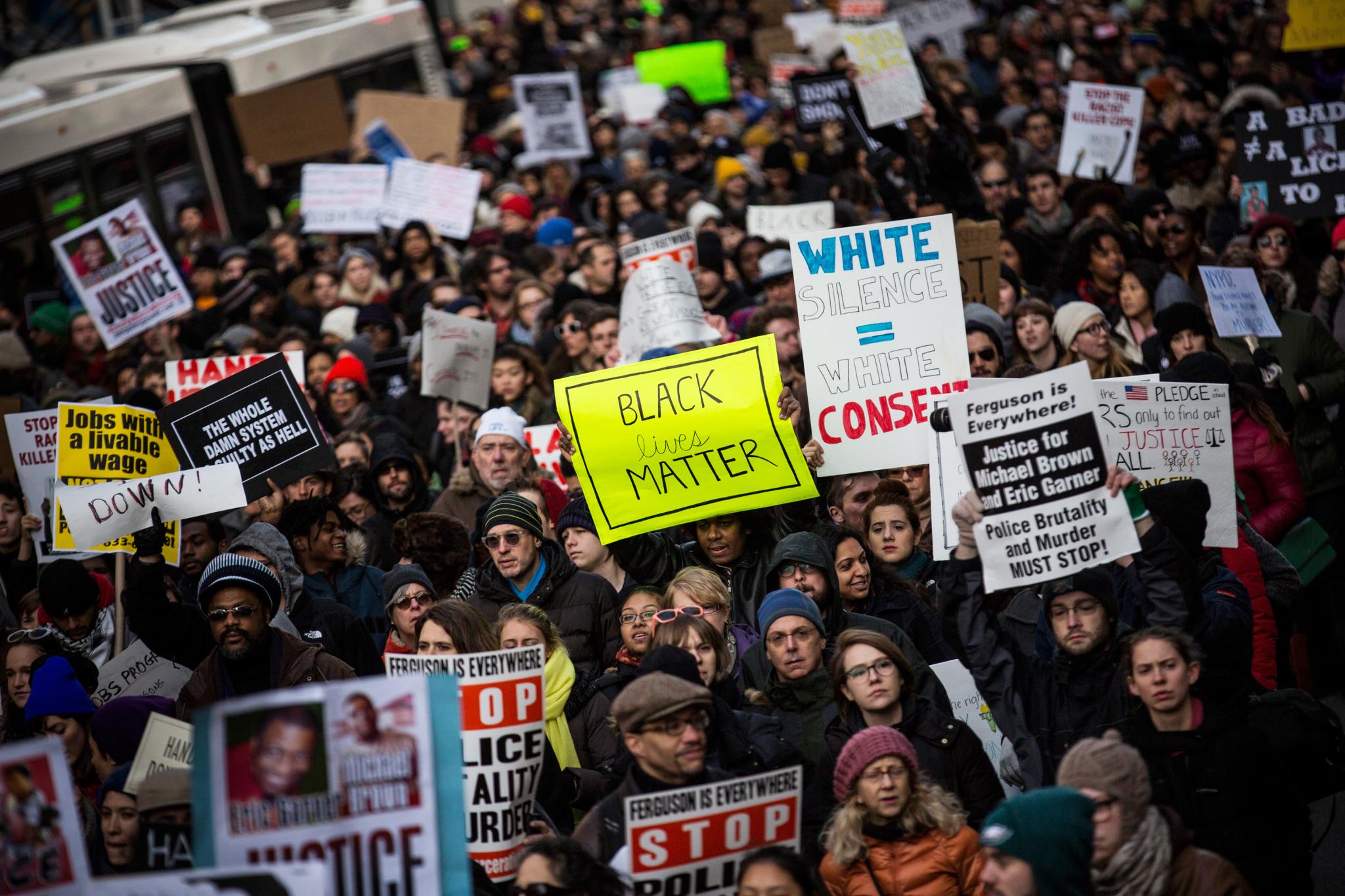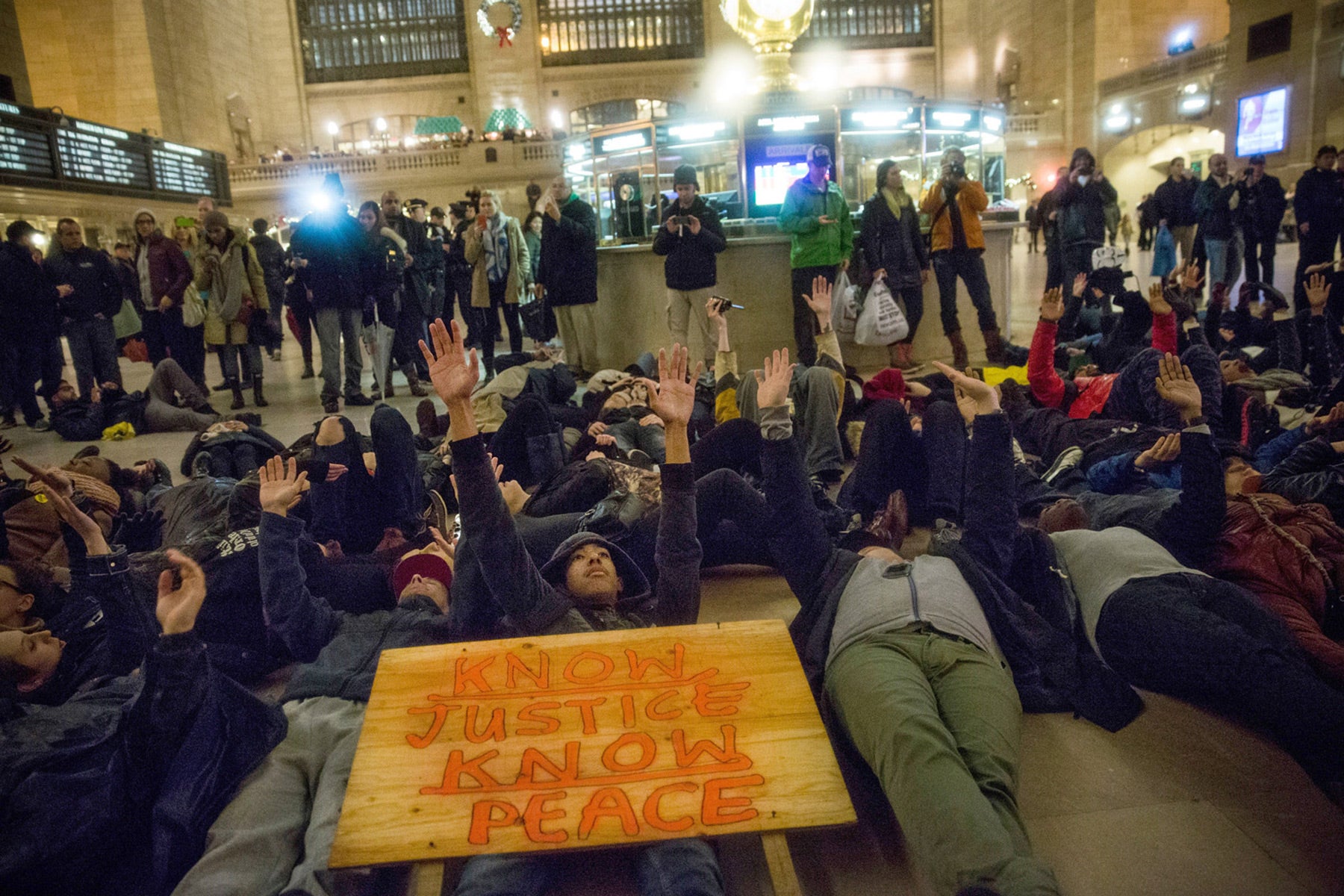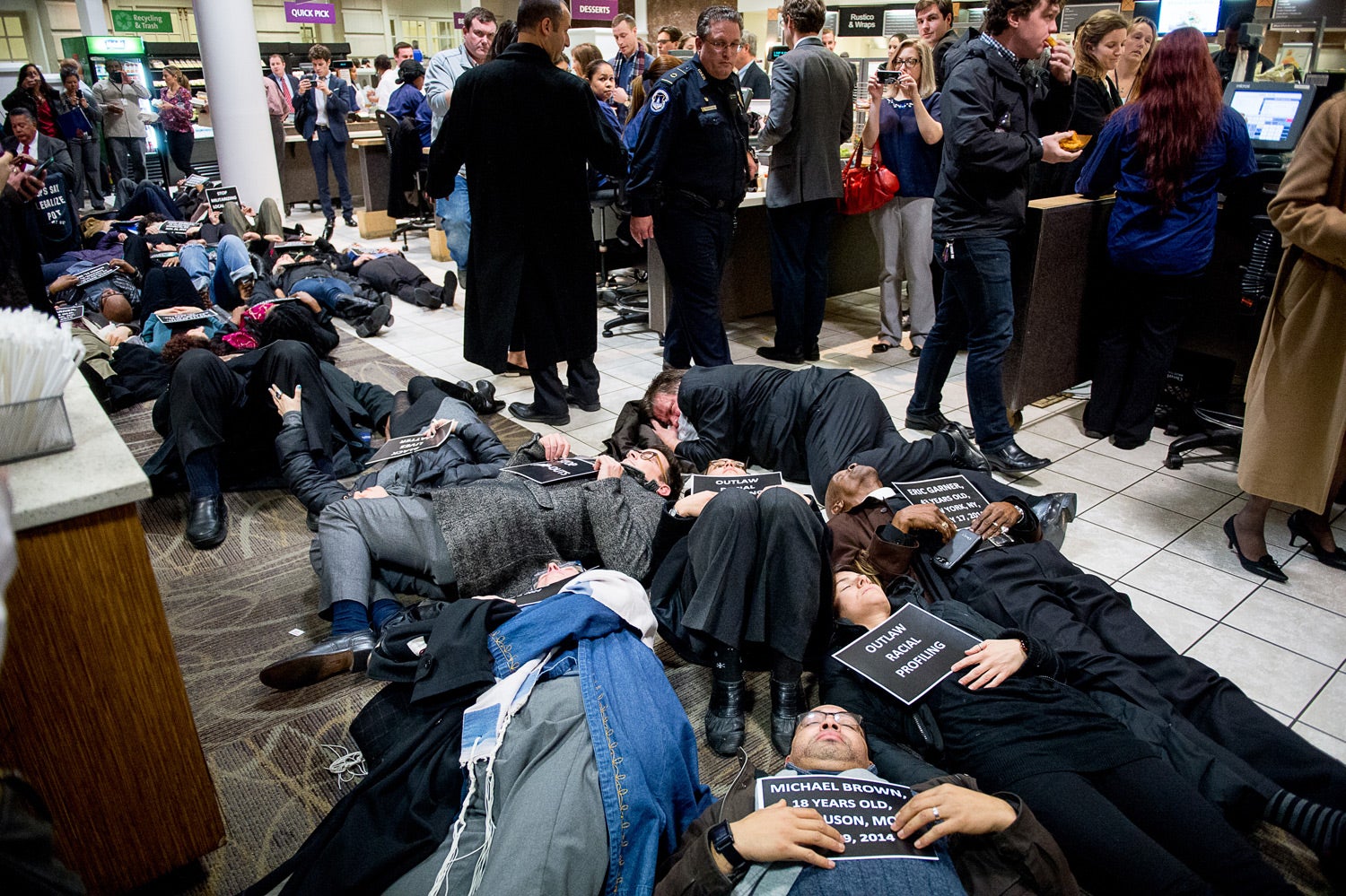When: 1946
Where: Washington D.C.
Catalyst: In 1946, two Black couples were lynched at Moore’s Ford Bridge in Georgia. The couples, one of which were expecting a baby, were brutally attacked by a White mob, who shot the couples and hung them from trees.
What Happened: Angered by what has been come to known as the “Monroe Murders,” 50 members of the National Association of Colored Women traveled to Washington D.C. and picketed outside of the White House, demanding that laws be passed outlawing lynching. “America, our home, let it be known that lynching must cease,” one of their signs read.
When: 1955
Where: Mississippi
Catalyst: After whistling at a White woman, 14-year-old Emmett Till was kidnapped from his bed one night by the woman’s angry husband. Three days later, his beaten and disfigured body was recovered in the Tallahatchie River. A jury found the husband and his half brother not guilty in the murder of the young teen.
Result: The death of Emmett Till sparked a pivotal moment in the civil rights movement, inspiring leaders to seek justice in various arenas. Rosa Parks was quoted as saying, “I thought about Emmett Till, and I could not go back. My legs and feet were not hurting, that is a stereotype. I paid the same fare as others, and I felt violated.”
When: 1955-1956
Where: Montgomery, Ala.
Catalyst: After Rosa Parks was arrested for not giving up her seat on a bus, thousands boycotted the Montgomery public buses.
Result: Montgomery’s Black residents boycotted the public buses for 13 months, until the Supreme Court ruled that the segregation of public buses was unconstitutional.
When: 1960
Where: Greensboro, N.C., spreading to other Southern cities
Catalyst: Tired of being denied service at restaurants, members of the Student Nonviolent Coordinating Committee began peacefully sitting at lunch counters, waiting patiently to be served. Though they were still denied service, they occupied seats, causing the eating establishments to lose business.
What Happened: Though 1,500 Black students were arrested over the course of the school year, the “sit-in” movement quickly gained traction, until eventually, Southern restaurants began desegregating their lunch counters.
When: 1961
Where: Washington D.C. to New Orleans
Catalyst: After the Supreme Court passed a law deeming that segregation in travel and bus terminals was illegal, a group of seven Black SNCC passengers and six White passengers boarded two buses to make the journey from D.C. to Louisiana.
What Happened: Throughout their journey, the group encountered violent mobs that beat the riders, slashed the buses’ tires and set the vehicles on fire. Riders were seriously injured, but they continued on their journey. Eventually, the violence attracted the attention of President Kennedy, who sent in the National Guard to escort the group as they continued their mission to desegregate cities.
When: April 28, 1963
Where: Washington D.C.
Catalyst: Various civil rights leaders, including Dr. Martin Luther King, led a march made up of more than 200,000 demonstrators in our nation’s capital to demand job equality and freedom.
What Happened: Not only was the March on Washington the backdrop for Dr. King’s famous “I Have a Dream” speech, but the demonstration helped push the Civil Rights Act of 1965 and the Voting Rights Act of 1964.
When: March 7, 1965
Where: Selma, Ala.
Catalyst: On that fateful Sunday, Dr. Martin Luther King set off to lead a group of 600 demonstrators from Selma to Montgomery, Ala., for equal voting rights.
What Happened: Soon after they embarked on their journey, the group was met on the Edmund Pettus Bridge by Alabam State Troopers, who violently beat and tear gassed the crowd after they refused to disperse. More than 50 people were sent to the hospital with injuries.
When: March 1965
Where: Selma to Montgomery, Ala.
Catalyst: Tired of having to fight for equal voting rights, the Southern Christian Leadership Conference (SLCL) and the Student Nonviolent Coordinating Committee (SNCC) led a group of Black citizens on a march from Selma to Montgomery, Ala.
What Happened: Dr. Martin Luther King led 3,200 marchers 54 miles over the course of five days. By the time the demonstrators arrived at the capital on March 30, the number of people had swelled to 25,000. Five months later, President Lyndon B. Johnson signed the Voting Rights Act of 1965.
When: April 1968
Where: Chicago
Catalyst: The nation mourned on April 4, 1968, when Dr. Martin Luther King Jr. was assassinated while standing on the balcony of his Memphis, Tenn., motel. He had arrived in the city the previous day to support sanitation workers who were on strike. On that fateful evening, he stepped onto his balcony to speak with SNCC leaders who were standing downstairs in the parking lot. An assassin fired a single shot, leaving him with fatal wounds to his face.
What Happened: After words of Dr. King’s death spread, riots, mobs and protests broke out in Chicago. Thousands looted stores, and many burned down shops along the way, targeting White-owned businesses. Though the riots were mostly contained in Black neighborhoods, the riots prompted fear in the White community and drove an even larger stake between the two races. On that night, 500 people were injured, and nine Black people were killed.
When: May 12, 1968
Where: Washington D.C.
Catalyst: In late 1967, Dr. Martin Luther King proposed that Black citizens unite and stage a march on Washington in what he called the “Poor People’s Campaign.” Believing that racial equality wasn’t achievable until economic equality prevailed, Dr. King began a pure campaign calling for economic security among the Black population.
What Happened: Shortly before the March was to take place, Dr. King was assassinated. Keeping his dream alive, 50,000 protestors traveled to Washington on May 12, setting up tents on the National Mall and camping out for six weeks.
When: April 7, 1970
Where: New Haven, Conn.
Catalyst: On April 2, 1969, 21 Black Panther members were arrested in New York City for conspiring to bomb various landmarks. The following, Black Panther chairman Bobby Seale and eight other members were charged with murder. Their arrest spurred the formation of the Black Panther Support Group at Northeastern University.
What Happened: The afternoon of April 7, 70 students in the group began marching from the campus to downtown Boston, chanting and holding signs that read “Free the Panthers.” Along the way, more than 1,900 other Black supporters joined the march. Once reaching the post office downtown, they listened as former Boston Black Panther chairman Doug Miranda and Artie Seale, wife of slain Black Panther Bobby Seale, delivered speeches urging them to not give up.
When: 1999-2000
Where: New York City
Catalyst: On February 4, 1999, four NYPD officers fatally shot Guinean immigrant Amadou Diallo, who was unarmed and standing outside of his Bronx apartment building. Mistaking him for a serial rapist, police officers fired 41 bullets at Diallo, 19 of which struck him. He died outside of his building. Though the four officers were charged with second-degree murder, they were all acquitted.
What Happened: Six weeks after the shooting, hundreds of protestors stormed police head, blocking entrances and holding signs that read “I’m Afraid of the NYPD.” On that day, more than 200 civilians were arrested, which, at the time, was the most in one day in New York City history. Many of the protestors were criticizing then-mayor Rudolph Giuliani for not doing anything about police brutality.
When: November 25, 2006
Where: Queens, New York
Catalyst: The night before his wedding, 23-year-old Sean Bell was leaving a strip club with friends when undercover police officers, who were surveying the area for prostitutes, thought they heard the group of young men threaten them. Police officers fired 50 rounds of gunfire at Bell and his friends, killing Bell and wounding his two friends.
What Happened: Rev. Al Sharpton led hundreds of protestors through the streets of New York, protesting the cops, who were acquitted of their crimes. In total, more than 200 protestors were charged with disorderly conduct for blocking various bridges.
When: February 26, 2012
Where: Sanford, Fl.
Catalyst: On the night of February 26, 17-year-old Trayvon Martin was walking home from the store in a gray hoodie with a bag of Skittles. Zimmerman, who was a neighborhood watch person, called 911 to report Martin, who he described as “a suspicious person.” Though operators urged Zimmerman to stay in his car, he approached the teen, attacked him and shot him in the head.
What Happened: Almost two months after the shooting, Zimmerman was charged with second-degree murder. In July 2013, a jury found him not guilty, which set off a firestorm of protests, many of which included people who donned gray hoodies representing the slain teen.
When: August 9, 2014 to present
Where: Ferguson, Mo.
Catalyst: On August 9, unarmed 18-year-old Michael Brown was shot and killed by police officer Darren Wilson.
What Happened: Demanding justice for Brown, protestors in Ferguson have tirelessly taken to the streets for more than five months. In November, a grand jury declined to bring charges against Wilson, which ignited the protestors even more. The fight is still ongoing.
When: November 27, 2014
Where: Nationwide
Catalyst: Sparked by the grand jury decision and the lack of justice in the death of Michael Brown, many Black shoppers, using the hashtag #BlackoutBlackFriday, decided to boycott stores on Black Friday, the popular shopping day after Thanksgiving.
What Happened: Not only did thousands of shoppers protest the shopping holiday, but many staged die-ins at malls across the country and protested outside of popular stores.
When: December 13, 2014
Where: New York City
Catalyst: On July 17, 2014, NYPD Officer Daniel Pantaleo put unarmed Staten Island resident Eric Garner into a fatal chokehold for allegedly selling illegal cigarettes. While in the chokehold, which is illegal practice for NYPD officers, Garner repeatedly yelled “I can’t breathe,” but policemen ignored his cries.
What Happened: Ignited by Garner’s death—and a New York grand jury’s decision not to bring charges against Pantaleo—as well as Michael Brown’s slaying, 19-year-old Umaara Elliot and 23-year-old Synead Nichols organized a peaceful march through New York City, which drew more than 25,000 demonstrators.
When: January 12, 2015
Where: New York City
Catalyst: After the August death of Michael Brown and the July death of Eric Garner, both slayed by policemen, protestors began staging die-ins around the country to raise awareness and demand justice.
What Happened: Defying NYPD orders, dozens of protestors staged a die-in at New York’s heavily trafficked Grand Central Terminal. Dozens of protestors laid out on the floor throughout the night, taking shifts, as police officers ordered them to move. However, the activists were not deterred—they stayed at their posts for the rest of the night.
When: January 21, 2015
Where: Washington D.C.
Catalyst: In the ongoing fight for racial justice after the deaths of Michael Brown, Eric Garner and countless other Black lives, protestors took to Capitol Hill to demand the eradicating of racial profiling as well as “jump outs,” a common practice in Washington D.C., where police officers—usually armed—violently stop-and-frisk Black men
What Happened: Chanting “Black Lives Matter,” more than 50 protestors, including Jewish, Christian and Muslim clergy, stormed the Longworth Building cafeteria, a popular lunch spot for D.C. lawmakers on Capitol Hill. They staged a four-minute die-in, before being escorted from the building.
